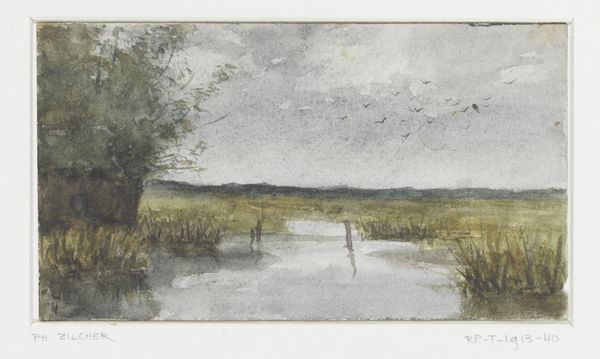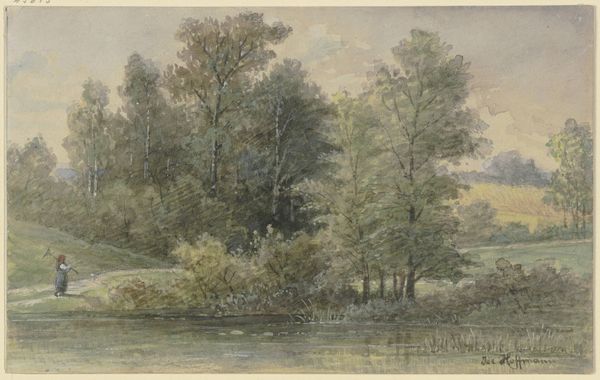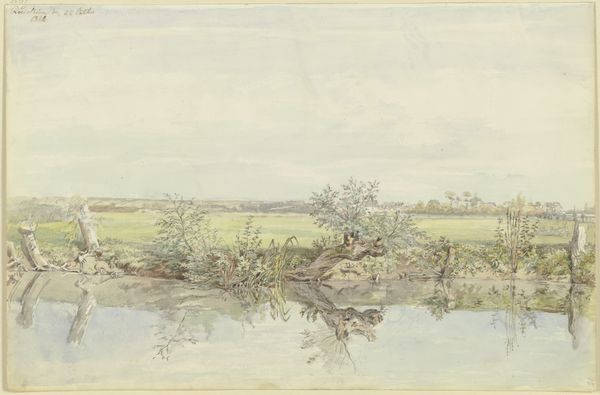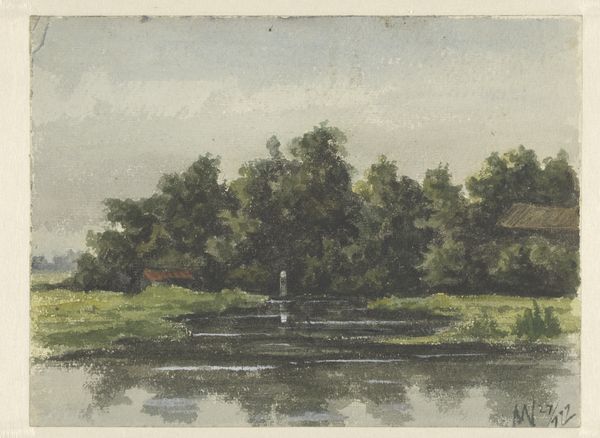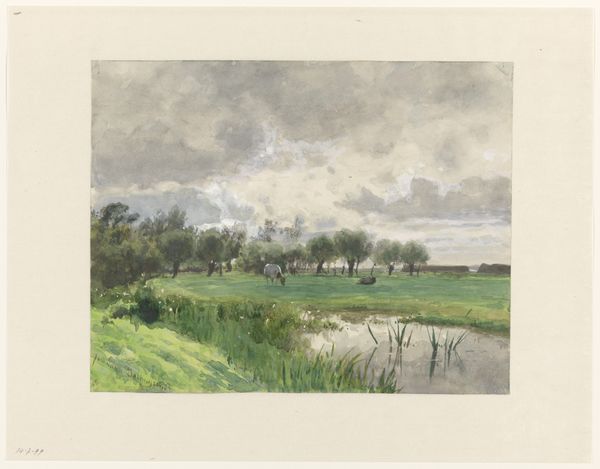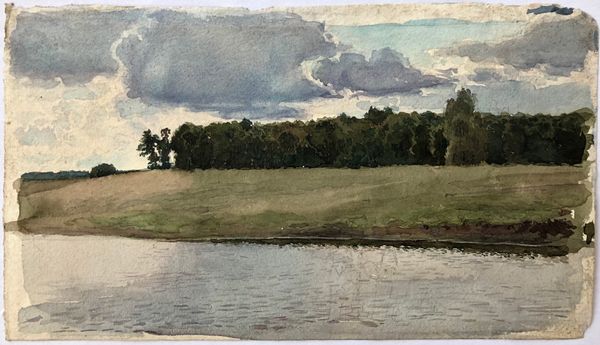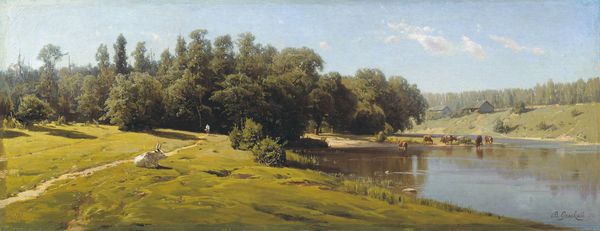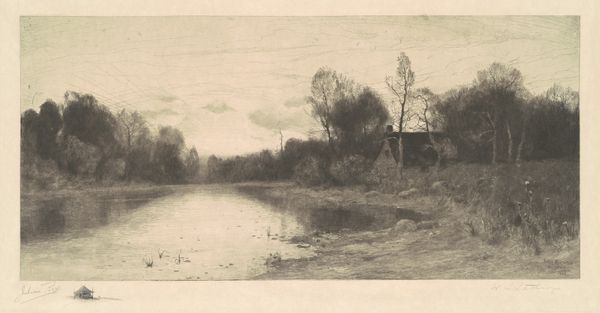
Dimensions: sheet: 19.6 × 28.7 cm (7 11/16 × 11 5/16 in.)
Copyright: National Gallery of Art: CC0 1.0
Editor: Here we have William Fraser Garden’s "River Landscape near St. Ives, Huntingdonshire" from 1897, rendered in watercolor. There’s a quiet stillness to this piece; a calm I wasn’t expecting. What do you see in this work? Curator: The "quiet stillness," as you put it, really resonates when we consider this landscape within its historical moment. This was painted in a period of massive industrial change in England, urbanization, and shifting relationships to the land itself. How might Garden be positioning this "quiet" landscape in relation to those turbulent forces? Editor: So, you're suggesting the painting might be a subtle form of resistance? A yearning for a simpler, more agrarian past? Curator: Exactly. It prompts us to think about whose land this is, who has access to it, and how industrialization impacted these traditional rural communities. Consider the "Plein-air" aspect; this isn't just a scene, it's a specific perspective, tied to Garden's presence and presumably privileged access to this vista. What is he not showing us, perhaps? Editor: I never considered it that way. I was so focused on the peaceful aesthetic that I missed the potential social commentary woven into the image. The land wasn’t accessible to all… Curator: Precisely! It’s vital to ask: for whom is this "quiet stillness" intended, and at what cost was it achieved? By juxtaposing art history with socio-political theory, we can deepen our appreciation for Garden's artistry while confronting complex questions about land, access, and social equity. Editor: That completely reframes how I see the work. It's no longer just a pretty landscape, but a visual document laden with historical context and potential social critique. Curator: Absolutely, and remember, the personal is political. Garden’s personal choice to depict this landscape connects to a wider conversation about land ownership, environmental impact, and social justice in 19th century Britain. It encourages us to explore his own context too.
Comments
No comments
Be the first to comment and join the conversation on the ultimate creative platform.

